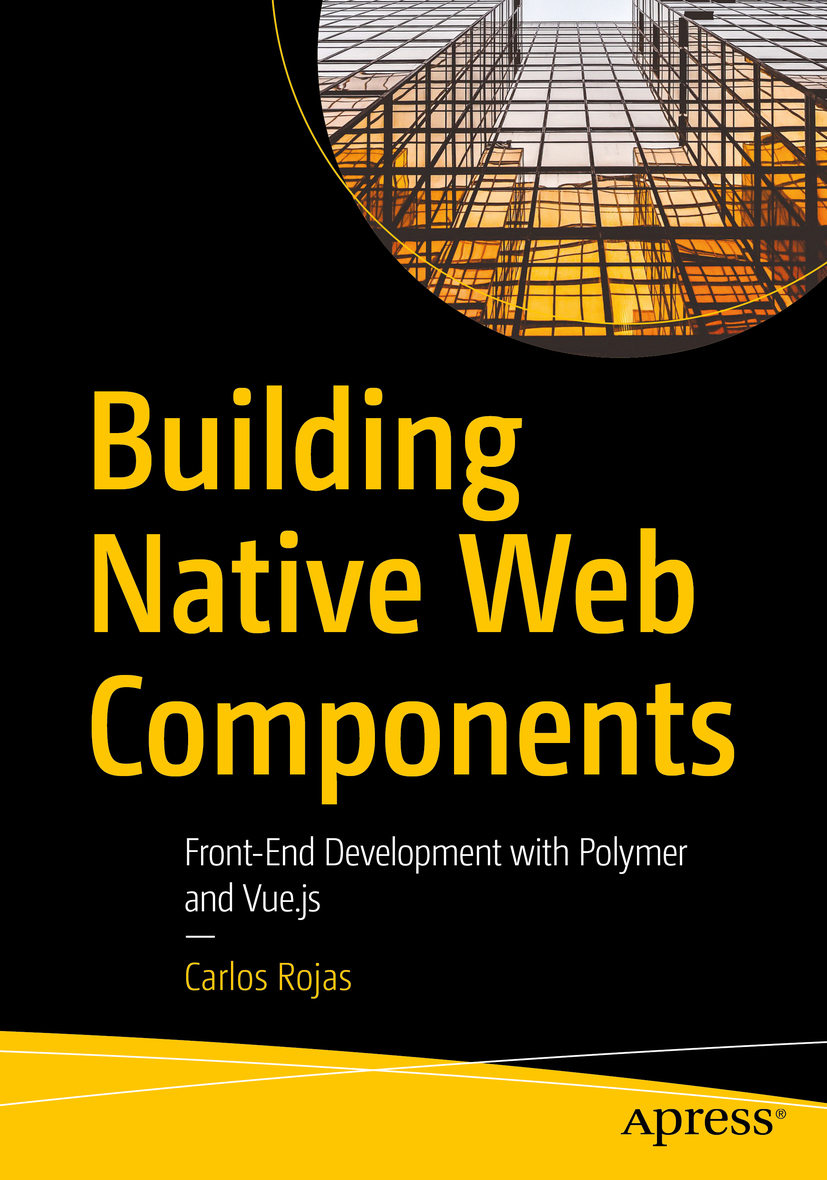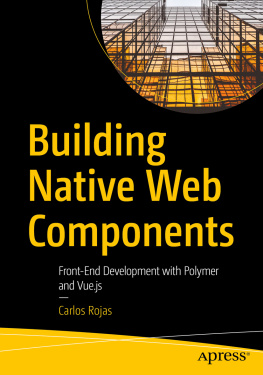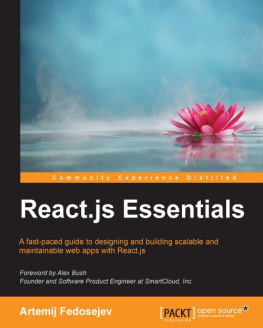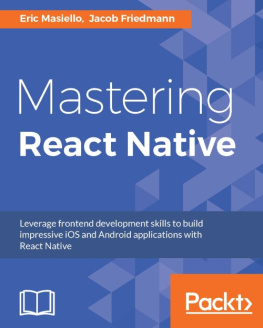Carlos Rojas - Building Native Web Components: Front-End Development with Polymer and Vue.js
Here you can read online Carlos Rojas - Building Native Web Components: Front-End Development with Polymer and Vue.js full text of the book (entire story) in english for free. Download pdf and epub, get meaning, cover and reviews about this ebook. year: 2020, publisher: Apress, genre: Home and family. Description of the work, (preface) as well as reviews are available. Best literature library LitArk.com created for fans of good reading and offers a wide selection of genres:
Romance novel
Science fiction
Adventure
Detective
Science
History
Home and family
Prose
Art
Politics
Computer
Non-fiction
Religion
Business
Children
Humor
Choose a favorite category and find really read worthwhile books. Enjoy immersion in the world of imagination, feel the emotions of the characters or learn something new for yourself, make an fascinating discovery.
- Book:Building Native Web Components: Front-End Development with Polymer and Vue.js
- Author:
- Publisher:Apress
- Genre:
- Year:2020
- Rating:5 / 5
- Favourites:Add to favourites
- Your mark:
- 100
- 1
- 2
- 3
- 4
- 5
Building Native Web Components: Front-End Development with Polymer and Vue.js: summary, description and annotation
We offer to read an annotation, description, summary or preface (depends on what the author of the book "Building Native Web Components: Front-End Development with Polymer and Vue.js" wrote himself). If you haven't found the necessary information about the book — write in the comments, we will try to find it.
Carlos Rojas: author's other books
Who wrote Building Native Web Components: Front-End Development with Polymer and Vue.js? Find out the surname, the name of the author of the book and a list of all author's works by series.
Building Native Web Components: Front-End Development with Polymer and Vue.js — read online for free the complete book (whole text) full work
Below is the text of the book, divided by pages. System saving the place of the last page read, allows you to conveniently read the book "Building Native Web Components: Front-End Development with Polymer and Vue.js" online for free, without having to search again every time where you left off. Put a bookmark, and you can go to the page where you finished reading at any time.
Font size:
Interval:
Bookmark:


Any source code or other supplementary material referenced by the author in this book is available to readers on GitHub via the books product page, located at www.apress.com/978-1-4842-5904-7 . For more detailed information, please visit www.apress.com/source-code .
To my grandmothers, who always believed in me
Web Components are everywhere in the current front-end environment. The three most popular frameworks, Angular, React, and Vue.js, use Web Components as an architectural element. In this book, you will learn how to empower a web app, building small pieces that can be integrated into any modern JavaScript project and modified for future use, if your company decides to migrate its current web app to a new and more promising framework.
In Chapter , you will create your first native web component. I am going to guide you through all the steps that you require to create a placeholder component, using web platform specifications.
Chapter covers the CustomElement specification. You will learn to use it to create custom tags on the Web and how its life cycle works.
Chapter covers HTML templates. I will discuss the
and elements and how to build a component with these.In Chapter , you will learn the Shadow DOM specification, how to add it in native Web Components, and what its benefits are.
Chapter discusses ES modules specifications, how to create modules, and how to use modules in our web applications.
In Chapter , you will learn how to design components and make them work together in a web application. We will connect our web application to an API and define a dataflow for our components.
In Chapter , you will learn how to make our Web Components available in npm . You also will learn about browser support for Web Components APIS, how to add polyfills to support more web browsers, and how to add Webpack and Babel to process and prepare our Web Components for publication.
Chapter covers how to build Web Components with Polymer, why Polymer is used instead of VanillaJS, how to use LitElement in our Web Components, and how to use lit-html .
In Chapter , we will develop an app. You will learn some key concepts and understand how to integrate Web Components and Vue.js.
In Chapter , you will see how Firebase hosting and Firebase authentication are used to release our final web app to the world.
To my friends, because they always found time to review my code and drafts; to my colleagues, because they helped me a lot with their feedback; to Yogendra, because his attention to detail made this book better; and to my editors, because their feedback and reviews have made this book a high-quality guide.

He enjoys sharing knowledge through talks at meetups, videos on YouTube, other books published by Apress, his personal blog ( https://medium.com/@carlosrojas_o ) , and helping startups and other companies run workflows to make excellent digital products. As such, his books aim to convey his love for the construction of scalable, high-quality products.

Yogendra also has hands-on experience in such technologies as AWS, IoT, Python, J2SE, J2EE, NodeJS, Vue.js, Angular, MongoDB, and Docker. He is constantly exploring technical novelties and is open-minded and eager to learn about new technologies and frameworks. He has reviewed several books and video courses published by Apress and Packt.
Welcome to building your first web component . This chapter discusses the various tools, technologies, designs, and development concepts that you will require to create your first web component. You will learn what a web component is, as well as what web browser support, design systems, and component-driven development (CDD) are.
At a high level, Web Components are isolated pieces (kinds of blocks) with which a user interface (UI) can communicate with other elements, through properties and events (inputs and outputs from these blocks). Take the element, for example. We can use this element with any technologies in a browser, and we can pass such properties as width and height and listen for events such as onclick .
Font size:
Interval:
Bookmark:
Similar books «Building Native Web Components: Front-End Development with Polymer and Vue.js»
Look at similar books to Building Native Web Components: Front-End Development with Polymer and Vue.js. We have selected literature similar in name and meaning in the hope of providing readers with more options to find new, interesting, not yet read works.
Discussion, reviews of the book Building Native Web Components: Front-End Development with Polymer and Vue.js and just readers' own opinions. Leave your comments, write what you think about the work, its meaning or the main characters. Specify what exactly you liked and what you didn't like, and why you think so.










